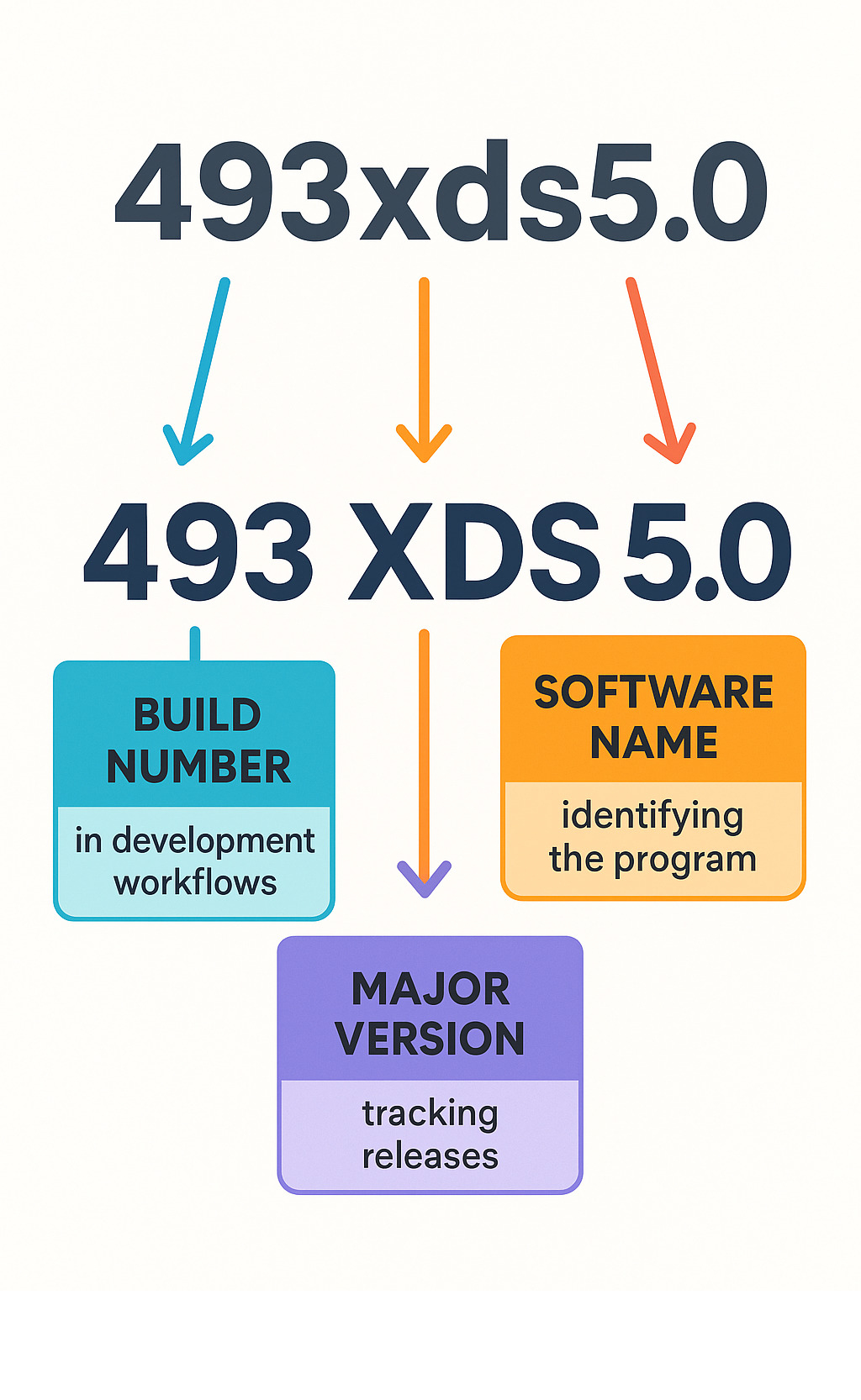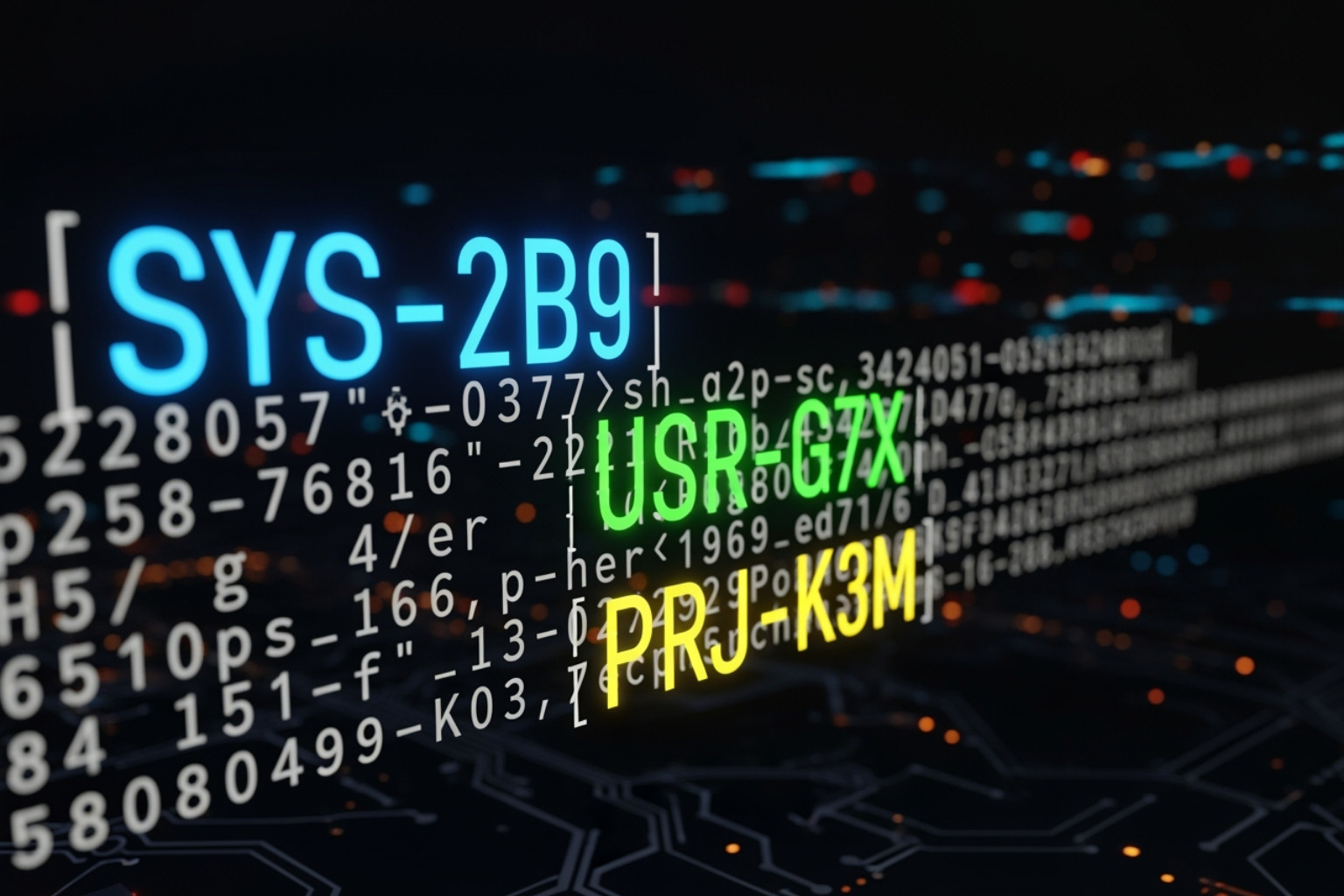Why Software Version Identifiers Matter More Than You Think
What is 493xds5.0 in software is a question that highlights how confusing technical identifiers can be. Simply put, 493xds5.0 is most likely a version or build identifier used to track a specific release of software – in this case, probably version 5.0 of the XDS Program Package, a scientific software used for processing crystal diffraction data.
Here’s what you need to know about 493xds5.0:
- 493 – Build number or internal reference code
- xds – Refers to the XDS Program Package for crystallography
- 5.0 – Major version number indicating a significant software release
- Purpose – Helps developers track exact software versions for debugging and deployment
- Context – Most commonly found in scientific research environments processing X-ray data
If you’ve stumbled across this cryptic code in error logs, documentation, or software interfaces, you’re not alone. As one developer put it: “You’ve just been handed a ticket for a critical production bug. The culprit? A cryptic log entry: 493xds5.0. Your heart sinks.”
Understanding these identifiers isn’t just for programmers. In our connected world, knowing how software versions work helps everyone communicate more clearly about technical issues and updates.
Version strings like 493xds5.0 play a vital role in organized software development. They enable precise troubleshooting, consistent deployments, and historical tracking – preventing the chaos that would happen if everyone worked with unnamed, untracked code.

Quick what is 493xds5.0 in software terms:
Decoding the Mystery: What Are Software Identifiers?
Have you ever wondered why software seems to speak in code? When you encounter something like what is 493xds5.0 in software, it might look like a random jumble of numbers and letters. But here’s the thing – there’s nothing random about it at all.
These mysterious strings are called software identifiers, and they’re basically the digital DNA of every program you use. Just like your fingerprint makes you unique, these codes give each piece of software its own special identity.
Think of software identifiers as the organized filing system that keeps our digital world from falling into chaos. Without them, trying to manage software would be like organizing a library where every book looks exactly the same from the outside. You’d never find what you’re looking for!
Software identifiers serve three main purposes: they make each version unique, they help developers work efficiently, and they create a clear trail of what happened when. This is especially important in software engineering, where keeping track of different versions can mean the difference between a smooth user experience and a complete disaster.
These little codes are the unsung heroes behind troubleshooting, quality assurance, and project management. When something goes wrong with an app, that identifier tells developers exactly which version caused the problem. It’s like having a detailed receipt for every software update.
The Purpose of Versioning in Development
Imagine trying to bake a cake without knowing which recipe you’re following, or which batch of flour you’re using. Sounds like a recipe for disaster, right? That’s exactly what software development would be like without proper versioning.
Version control is the backbone that keeps development teams sane and productive. It’s not just about organizing code – it’s about creating a system where everyone knows exactly what they’re working with at any given moment.
Here’s where identifiers like 493xds5.0 in software become absolutely essential for development teams:
Precise troubleshooting becomes possible when you know the exact version that’s causing problems. Instead of developers scratching their heads wondering “which version was that again?”, they can immediately recreate the exact environment where the bug occurred. This saves hours of frustrating detective work.
Consistent deployments happen when automated scripts use these identifiers to ensure the right version reaches users every time. No more accidentally pushing last week’s code to production because someone forgot to update a file.
Historical tracking lets teams see how their software evolved over time. Want to know when a particular feature was added or when a bug was introduced? The version history tells the whole story.
Preventing errors becomes much easier when everyone speaks the same language. When a team member says “we’re testing 493xds5.0,” everyone knows exactly which codebase they mean.
Team communication flows smoothly because there’s no confusion about which version anyone is discussing. This is especially crucial for large teams working across different time zones.
Automated scripts can do their job reliably, triggering builds, running tests, and deploying applications without human intervention. These systems rely on clear version identifiers to know when and how to act.
The beauty of a well-designed versioning system is that it turns potential chaos into organized progress. Every change, every fix, and every improvement gets its proper place in the software’s evolution.
Common Types of Software Identifiers
Software identifiers come in many flavors, each designed for a specific purpose. Understanding these different types helps explain why what is 493xds5.0 in software follows a particular pattern.
Error codes are probably the most familiar to everyday users. We’ve all seen HTTP 404 errors when a webpage can’t be found, or those cryptic error messages that pop up when something goes wrong. These codes help applications communicate problems quickly and precisely.
Log event IDs work behind the scenes, creating breadcrumbs that developers can follow when tracking down issues. Every time something significant happens in a program, it gets stamped with a unique identifier that makes it searchable later.
Transaction IDs become crucial when software needs to coordinate multiple operations. Think about online shopping – your single purchase might touch payment systems, inventory databases, and shipping services. A transaction ID keeps all these pieces connected.
Version numbers like the “5.0” in our example follow specific patterns that tell developers important information. Many use a MAJOR.MINOR.PATCH format where major changes break compatibility, minor changes add features, and patches fix bugs. This system, known as Semantic Versioning, helps everyone understand what to expect from each update.
Build IDs get more granular than version numbers, often representing a specific compilation of the code. The “493” in 493xds5.0 in software likely serves this purpose, helping developers identify exactly which build they’re working with.
Each type of identifier plays a vital role in keeping our digital world organized and functional. They might look cryptic from the outside, but they’re actually having very clear conversations about what’s happening in your software.

A Detailed Breakdown: What is 493xds5.0 in Software?
Let’s dive deeper into our mysterious identifier: 493xds5.0 in software. Think of this alphanumeric string as a coded message that software developers use to communicate precisely about their work. It’s like having a secret language that tells you exactly which version of a program you’re dealing with.

When you see 493xds5.0 in software, you’re looking at what we call a composite identifier. It’s packed with layers of meaning, much like how a product barcode tells you everything about an item in a store. This particular string points to a specific iteration of a software product, and its structure follows a common pattern that developers love to use.
Breaking Down the Clues: What is 493xds5.0 in software?
To really understand what is 493xds5.0 in software, let’s break it down piece by piece. Each part tells us something important about this software version.
The ‘493’ part at the beginning is most likely a build number or internal reference code. Imagine if every time a baker made a batch of cookies, they numbered it – that’s essentially what this does for software. In development teams, every time code gets compiled into a working program, it gets a sequential number. The number 493 suggests this software has gone through many iterations and improvements. It could also represent a project milestone, a specific testing phase, or even an internal release cycle marker.
The ‘xds’ section is where things get really interesting. This isn’t just random letters – it’s actually the key to solving our mystery. The letters “xds” point directly to a specific software package called XDS, which is used in scientific research. Think of it as the software’s “first name” or main identifier that tells you which program family you’re dealing with.
The ‘5.0’ part is probably the most familiar to most people. This represents a major version number, similar to how your phone might go from iOS 14 to iOS 15. When software jumps to a “.0” version (like 4.0 to 5.0), it usually means big changes have happened. New features, major improvements, or significant updates that make this version notably different from what came before.
When we put all these pieces together, 493xds5.0 in software most likely refers to build number 493 of version 5.0 of the XDS Program Package. It’s like having a complete address that tells you exactly where to find this specific version of the software. For those curious about the technical details, you can learn more at More about the XDS Program Package.
The Most Likely Candidate: The XDS Program Package
Now that we’ve decoded the clues, let’s talk about what XDS actually is. This isn’t software you’d find on your home computer or smartphone. Instead, it’s a highly specialized tool used by scientists, particularly those working in crystallography research.
XDS software is like a powerful microscope for the digital age. Scientists use it to process data from X-ray diffraction experiments, which help them understand how atoms are arranged in crystals. When researchers want to figure out the structure of important molecules – like new medicines or proteins in our bodies – they often start by creating crystals and then studying them with X-rays.
The process creates incredibly complex data patterns, and that’s where XDS comes in. It takes this raw, complicated information and transforms it into something scientists can actually use to understand molecular structures. Think of it as a translator that converts scientific “noise” into meaningful insights.
This scientific software plays a crucial role in data processing for researchers around the world. From universities to pharmaceutical companies, scientists rely on tools like XDS to make breakthrough findies. The fact that we’re looking at version 5.0 suggests this software has evolved significantly over the years, incorporating new features and improvements based on the scientific community’s needs.
At Beyond Beauty Lab, while we focus on beauty and wellness rather than crystallography, we appreciate the precision and attention to detail that goes into scientific research. Just as we provide detailed guides for understanding complex topics in our field, scientists need reliable tools like XDS to make sense of their complex data. Speaking of detailed guides, you might find our comprehensive resources helpful, such as those in our More info about US Markets Guide.
Why Understanding Identifiers Like 493xds5.0 Matters
Picture this: you’re troubleshooting a software issue at work, and someone mentions they’re seeing problems with “that version from last month.” Sound familiar? Without specific identifiers like 493xds5.0 in software, conversations like this become exercises in frustration rather than productive problem-solving.

Understanding software identifiers isn’t just for tech professionals anymore. In our increasingly digital world, these version strings appear everywhere – from debugging sessions to project management meetings, internal documentation to testing environments. They’re the common language that helps teams communicate clearly about exactly which version of software they’re discussing.
Think of it like having a conversation about skincare products. Instead of saying “that moisturizer we tried,” it’s much clearer to say “the hyaluronic acid serum from batch #2023-04.” The specificity eliminates confusion and helps everyone stay on the same page.
Real-World Impact: How knowing what is 493xds5.0 in software helps
When you understand identifiers like 493xds5.0 in software, you open up several practical benefits that make digital work smoother and more efficient.
Pinpointing bugs becomes surgical rather than exploratory. Instead of developers spending hours recreating various scenarios, they can zero in on the exact build where the problem occurred. It’s like having GPS coordinates for a software issue rather than vague directions.
Recreating environments becomes foolproof. When someone reports an issue with a specific version, teams can pull up that exact configuration – same code, same settings, same dependencies. This eliminates the dreaded “it works fine on my computer” response that frustrates users and developers alike.
Ensuring consistency across deployments transforms from hopeful guessing to confident precision. Automated scripts use these identifiers to guarantee that what passed testing is exactly what reaches users. No surprises, no unexpected rollbacks.
Tracking progress and comparing features becomes straightforward when each version has a clear identifier. Project managers can easily see which features shipped when, and teams can make informed decisions about upgrades based on specific version comparisons.
Avoiding deployment errors saves both time and money. Clear version identifiers act like safety nets, preventing the wrong software from reaching production environments where mistakes can be costly.
Just as understanding market trends helps in making financial decisions (you can explore more about this in More info about FintechZoom.com – Economy), grasping these technical identifiers helps in making better software decisions.
Best Practices for Managing Software Versions
Managing software versions effectively requires the same attention to detail that goes into formulating quality wellness products. Here’s how successful teams handle identifiers like 493xds5.0 in software.
Documentation becomes your best friend. Every version needs clear release notes explaining what changed, what’s new, and what might break. Think of it as ingredient labels for software – users need to know what they’re getting.
Version control tags in systems like Git create permanent bookmarks in your code history. These tags work like timestamps, allowing teams to jump back to any specific version instantly. A tag like “v5.0-build493” makes the connection crystal clear.
Consistent naming conventions eliminate guesswork. Whether you use sequential numbers, dates, or mixed formats, sticking to one system helps everyone understand version identifiers at a glance. Changing your naming scheme mid-project is like switching measurement units halfway through a recipe.
Testing against specific versions ensures quality control. Just as you wouldn’t test a skincare formula on one batch and sell a different one, software teams must test the exact version that will reach users. This prevents nasty surprises in production.
Automated versioning reduces human error and integrates smoothly into modern development pipelines. When computers handle the numbering, consistency improves and developers can focus on building great features instead of managing version numbers.
These practices transform version management from a potential headache into a reliable system that supports smooth development and deployment processes.
Frequently Asked Questions about Software Versioning
When you stumble across mysterious codes like what is 493xds5.0 in software, it’s natural to have questions. These cryptic strings pop up everywhere – in error messages, documentation, and system logs – leaving many people scratching their heads. Let’s explore the most common questions we hear about software versioning to clear up the confusion.
Can 493xds5.0 refer to a specific software product?
Absolutely! What is 493xds5.0 in software isn’t just some random jumble of characters – it’s actually a very specific identifier pointing to real software. The “xds” part is the biggest clue here, strongly suggesting this refers to the XDS Program Package, a specialized scientific tool used in crystallography research.
Think of it like a street address for software. Just as “123 Main Street” points to a specific house, 493xds5.0 in software points to build number 493 of version 5.0 of the XDS software. This isn’t something you’d find in your typical app store, though. The XDS Program Package lives in academic research, where scientists use it to analyze crystal structures and molecular arrangements.
It’s worth noting that this type of precise identification is crucial in scientific environments. When researchers are working with complex data analysis, they need to know exactly which version of their tools they’re using. A small difference between software versions could potentially affect research results, so these detailed identifiers serve an important purpose beyond just keeping track of updates.
How do software identifiers aid in troubleshooting and debugging?
Software identifiers are like breadcrumbs that lead developers straight to the source of problems. Without them, debugging would be like trying to find a needle in a haystack while blindfolded!
When someone reports a bug and mentions they were using what is 493xds5.0 in software, that’s incredibly valuable information. It tells developers the exact version of code that was running when things went wrong. This means they can pull up that precise build, recreate the same environment, and see the bug happen for themselves.
Precise identification is the first superpower these identifiers provide. Instead of developers guessing which version might have caused an issue, they know exactly where to look. Exact code version matching allows them to set up identical testing conditions, making it much easier to reproduce and understand the problem.
The real magic happens when teams can replicate errors consistently. Once you can make a bug happen on command, you’re halfway to fixing it. Developers can then work backwards, comparing the problematic version with earlier working versions to isolate bugs and pinpoint exactly what changed.
This systematic approach leads to faster resolution times and better developer communication. When everyone on the team knows they’re discussing the same version, there’s no confusion or wasted effort working on the wrong problem.
How do software versioning schemes evolve over time?
Software versioning is like watching a child grow up – it starts simple and becomes more sophisticated as needs change. Most projects begin with basic numbering but develop more complex systems as they mature.
In the early days, developers often used simple numbers like 1, 2, 3. This works fine for small projects, but as software grows more complex, teams need more detailed tracking systems.
Many projects then adopt Semantic Versioning (SemVer), which follows a MAJOR.MINOR.PATCH format. This popular system gives users clear expectations about what each update contains. A major version change might break compatibility with older systems, while minor updates add new features without breaking existing functionality.
Internal build systems often get much more granular, incorporating elements like our “493” in what is 493xds5.0 in software. These detailed identifiers help development teams track every single compilation and change, which is essential for large projects with frequent updates.
Some teams prefer date-based versions that tie releases to specific calendar schedules, while others develop custom schemes custom to their industry needs. The evolution with project complexity means that versioning systems grow and adapt alongside the software they track.
The beauty of this evolution is that it reflects the growing sophistication of software development itself. What starts as a simple way to tell versions apart becomes a powerful communication and management tool that keeps entire development ecosystems organized and efficient.
Conclusion
So, what have we finded about what is 493xds5.0 in software? We’ve uncovered that it’s far from being just a random jumble of numbers and letters thrown together by some computer. Instead, it’s a thoughtfully designed software identifier that most likely represents build 493 of version 5.0 of the XDS Program Package—a highly specialized scientific tool used for processing X-ray diffraction data in crystallography research.
This journey into decoding software identifiers gives us a fascinating glimpse behind the scenes of how our digital world actually works. It reveals the incredible precision, organization, and technical knowledge that goes into building and maintaining the software tools that quietly power everything around us. These version strings aren’t just cryptic codes meant only for programmers in dark rooms—they’re essential communication tools that help with troubleshooting problems, ensuring software deployments go smoothly, and tracking the fascinating evolution of digital products over time.
Understanding identifiers like 493xds5.0 in software transforms what initially looks like chaos into something beautifully clear and organized. It’s like learning to read a secret language that suddenly makes the digital world much less mysterious and much more approachable.
Just as we at Beyond Beauty Lab believe in empowering you with knowledge to improve your beauty and wellness journey, understanding these fundamental building blocks of software empowers all of us to steer our increasingly digital lives with greater confidence and clarity. Whether you’re deciphering the version number of complex scientific software or learning about the ingredients in your favorite skincare routine, knowledge truly is the key to open uping your potential.
The importance of versioning in software development mirrors our approach to wellness knowledge—both require attention to detail, clear communication, and a commitment to continuous improvement. When you know exactly what you’re working with, whether it’s a specific software build or a particular wellness practice, you can make better decisions and achieve better results.
For more comprehensive guides and resources that blend technical understanding with practical wisdom, we invite you to Explore our complete business guide.







